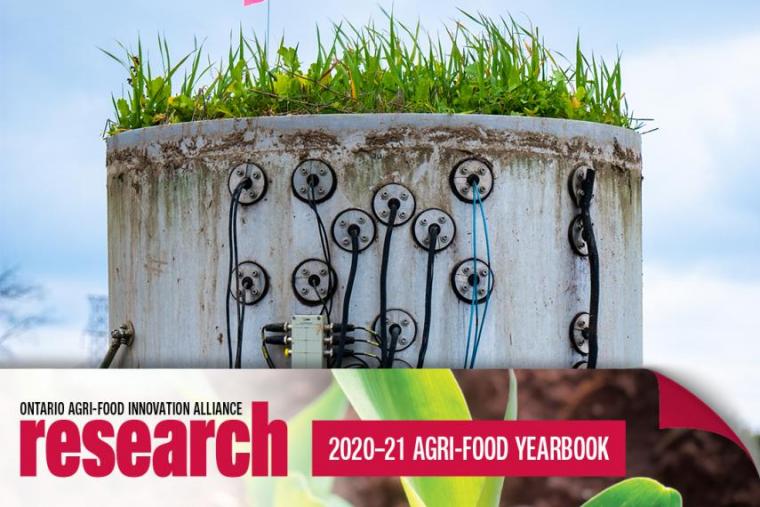
For decades, researchers carrying out long-term crop rotation trials have found that diversification improves yield stability. Now, a long-term study is under way at the Ontario Crops Research Centre – Elora using new technology to investigate the mechanisms at play in the soil that account for these improvements. The ultimate goal is to determine best practices for producers.
Since 2016, Dr. Claudia Wagner-Riddle, research technician Sean Jordan, their collaborators and a team of graduate students from the University of Guelph have observed the effects of different crop rotations and cover crops using 18 soil lysimeters — one-square-metre cylinders embedded 150 cm into the soil to give unique insight into water gain and loss. This study is the first of its kind in North America.
“There’s evidence that diverse crop rotation pays off long-term, but it’s not clear why that’s the case,” says Wagner-Riddle, a professor in the School of Environmental Sciences. “We speculate that it’s related to water, so the soil lysimeter facility is the perfect way to investigate this factor and its effects on the soil.”
Sensors embedded in each lysimeter at five depths help the researchers “see” soil water tension, carbon dioxide concentration, temperature and electroconductivity. Water samples are also collected at these depths to measure nitrate and phosphate content, while air sampling occurs at the soil surface to monitor greenhouse gas flux. The sensors yield millions of data points every day, with processing and quality assurance overseen by research associate Shannon Brown.
“The biggest challenge is the constant technical operation of this facility,” says Wagner-Riddle. “It takes many people to make sure everything is working, but the reward is that we get a very comprehensive data set.”
The 18 lysimeters are split between two soil types: loamy soil extracted on site and sandy soil from around Cambridge, Ont. A number of plots in each soil type use a conventional crop rotation of soybean-soybean-corn, while the others use a more diverse rotation of soybean-winter wheat-corn with cover crops planted in the off season — a mix of oats, daikon radish, crimson clover or rye grass.
The researchers intend to continue studying the effects of crop rotation on a long-term basis. Although the project has undergone only one full crop rotation, data analysis from 2017 to 2018 revealed significant advantages in the diverse crop rotation. Results from this period showed a remarkable 70-per-cent decrease in nitrate loss in the diverse rotation using cover crops compared to the conventional crop rotation. Because it was a particularly wet year, nitrogen that would have leached from the soil was instead taken up by the cover crops and then remained in the soil as part of the plant biomass.
Wagner-Riddle says the results won’t be this striking every year. But the accumulation of these effects over time is expected to benefit producers economically by reducing fertilizer use and improving yield stability as the crops become more resilient to extreme weather events — not to mention the environmental benefits, like reducing nitrogen runoff into water sources and recapturing atmospheric carbon dioxide back into the soil.
“In the next few years, we expect to have some really interesting analysis coming out of this facility, which will help both producers and the environment,” says Wagner-Riddle.
Collaborators on this research include graduate student Jared LaPierre; co-adviser Dr. Hugh Henry, Western University; the Ontario Soil and Crop Improvement Association; and Grain Farmers of Ontario. The lysimeter facility was funded by the Canada Foundation for Innovation and the Ontario Ministry of Research, Innovation and Science.
This project is funded by an NSERC Strategic Partnership Grant and the Ontario Ministry of Agriculture, Food and Rural Affairs through the Ontario Agri-Food Innovation Alliance.
The Ontario Crops Research Centre – Elora is owned by the Government of Ontario through its agency, the Agricultural Research Institute of Ontario, and managed by the University of Guelph through the Ontario Agri-Food Innovation Alliance.
This article originally appeared in the 2021 Agri-Food Yearbook edition of [1]Research magazine. [1]
Written by Dianne Priamo.
